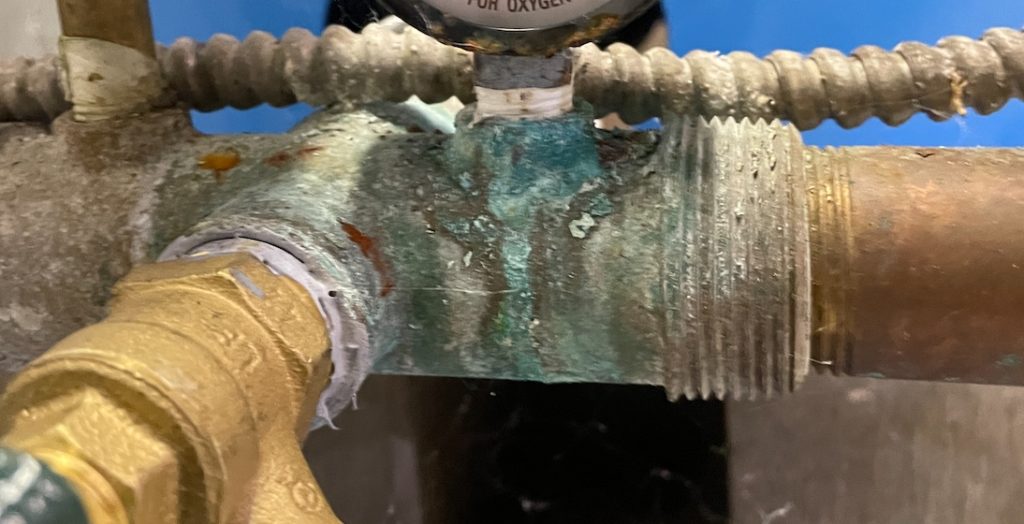If you’ve recently run into the term “iron biofouling” you might find yourself a bit confounded. This article will run you through the information you need to know about iron biofouling and iron bacteria.
Biofouling Basics
To start from the most basic point, biofouling is the process by which a material is covered with microorganisms. This normally happens on a submerged surface where bacteria colonizes a surface where it’s preferred that they would not live.
As such, iron biofouling is the common problem where iron is covered in microorganisms, usually bacteria, which can damage the material. These microorganisms can form a “biofilm” or deeper coating that degrades the underlying material over time.

What To Know About Iron Biofouling
With iron biofouling, iron-loving bacteria live on the iron, but this can also happen with other materials and even other metals, like aluminum and manganese, so the problem isn’t specific to iron.
Iron biofouling usually takes the form of some sort of slime on an iron surface that is submerged or often wet. This can be a red slime or an orange gel, but usually it will be viscous and colored like the iron. Expect a strong, unpleasant odor, which will likely be sulfurous like rotten eggs.
Biofouling can be completely harmless or it can damage the underlying material. This will depend entirely on the bacteria/microorganism in question as well as the use of the material. A biofouled material might lose strength over time, it might look dirty, or it simply might be slippery when handled.
In rare cases biofouling might be helpful. In some wells there can be biofouling within the well which collects excess iron that isn’t wanted in the water that is going to be removed from the well. This is a rare case, but it’s not unheard of to have an unintended positive consequence like this.
More often, biofouling, in this case iron biofouling can cause serious issues in pipes, plumbing, and nearby materials. These include:
- Iron buildup which can cause slow pipes or clogs
- Corrosion and even leaks as materials degrades over time
- Odors, like a rotten egg smell, from the growth and respiration of the bacteria
- Red, iron-filled water and staining when bacterial shakes loose from its biofilm, known as outfall
Signs of Iron Biofouling
Iron biofouling isn’t dangerous to humans, but it can make affected water smell poorly. The taste can vary from a vegetal taste like cucumbers to rotten eggs to a swampy or even gasoline-like taste. The smells will be similar.
More importantly biofouled water may be subject to other problems like coliform and nitrates, which may have entered the pipes or well in the same way the iron bacteria did. Problems like these are often caused by a broken or cracked wellhead, but can also be caused by using the wrong type of water to prime a pump or well that is to be used with drinking water.
The water can look off as well. This can happen through a red/orange coloring from the loose iron (which can also simply be caused by a high iron content in water) to a rainbow-colored oil-like sheen in water.
If you are looking the biofouled surface itself, it will likely be smooth and there will appear to be a film on it. It will likely be red to orange color and it will look hairy or feathered.
Treating Iron Biofouling
Iron biofouling can be treated using proper material choices, water filtering, and water treatment. Sometimes fixes can be as simple as using a smoother material which greatly reduces the chance that a bacteria can grow on a surface if the water nearby is moving. Others fixes can be more complex and expensive.
Most treatment scenarios will happen in multiple stages. The first step will be to physically remove the biofilm from the surface, by cleaning it off and removing the collected bacteria. This will help the situation, particularly how it looks, but it will not stop the iron bacteria from returning, so more steps are necessary.
A chemical treatment will be the next step in order to solving the issue at hand. This will vary based on the type of water source as well as it’s location, but the process will usually involve the use of a disinfectant to kill off the bacteria.
If you are dealing with a drinking water well, you will need to call a licensed well treatment professional in order to ensure the proper chemicals are used in the correct amounts and formulations. If you aren’t working with drinking water then something as simple as bleach can be an effective tool.
Sources: